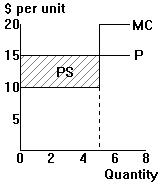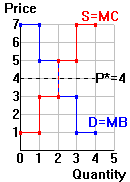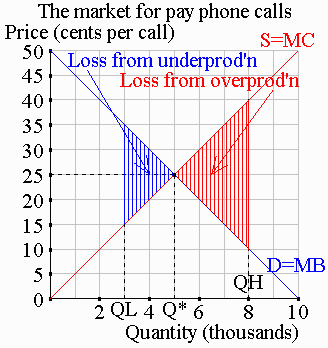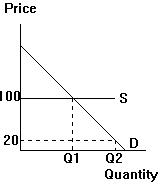|
1. |
a. | 3 cups; buy as long as marginal benefit > price (here, $.50). | ||
| b. | Consumer surplus = benefit in excess of
expenditure. Here: TB = 2.00 + 1.00 + .50 = $3.50 TE = 3 x .50 1.50 CS = (\\\ in diagram) 2.00 Note: a rough linear sketch is fine. |
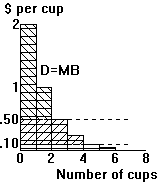 |
||
| c. | CS would fall by $.25 | |||
| d. | 5 cups.
CS would rise to $3.35 (TB=3.85; TE=.50) (adds /// in diagram) |
|||
| e. | (1) | Drink 7 cups. TB = $3.90; TE = 1.75 => CS = $2.15 | ||
| (2) | Since $2.15 of CS with free refills > CS of 2.00 when
P=$.50, you prefer the 1.75 + free refills. (TB = entire area under D, marked with the horizontal lines) |
|||
